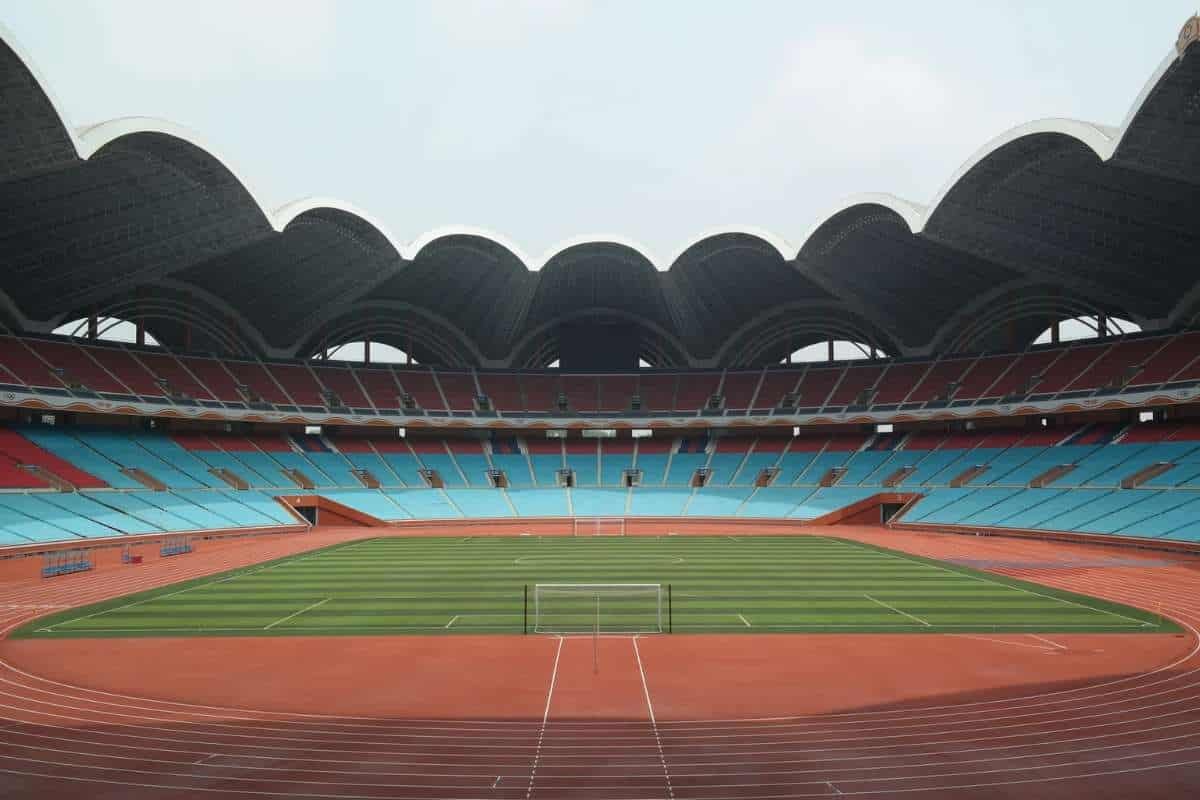Football or soccer, as it is commonly referred to in some parts of the world, is just a game — it’s a global craze. From alleyways to massive stadiums, the sport binds fans across borders, languages, and cultures. Among the numerous wonders built in dedication to this sport, none are more memorable than the world’s largest football ground. This gigantic arena is not only about the vastness; it symbolizes the magnitude and fervor the sport commands everywhere in the world.
Setting the Record: Which is the World’s Largest Football Ground?
To date, the Rungrado 1st of May Stadium in Pyongyang, North Korea, holds the record as the world’s largest football ground. Its official seating capacity of approximately 114,000 spectators dwarfs all other football stadiums in size. Originally opened in 1989 and rebuilt in 2014, this massive stadium derives its name from International Workers’ Day, indicating its importance as a sports venue and national icon.
Despite being situated in a nation quite distant from the international sporting scene, the stadium has become the subject of global acclaim owing to its architectural and massive scale grandeur. It hosts football matches, athletics, and the popular Mass Games — an enormous-scale performance that has elements of gymnastics, dance, and propaganda imagery.
A Glimpse into the Stadium’s Design and Architecture

The Rungrado 1st of May Stadium is not only notable for its size — it’s an architectural wonder. The stadium roof is shaped like a magnolia flower, composed of 16 arches in a circle. The flower-like structure provides aesthetic value and structural integrity, as the huge arena can give shade and protection to spectators without the use of pillars that could block vision.
The pitch complies with international standards, and the stadium features several levels of seating, luxury suites, and VIP lounges. While not extensively utilized for international football tournaments, the sheer magnitude of the world’s largest football ground remains a magnet for international fascination and admiration.
Global Comparisons: Other Massive Football Grounds
While the Rungrado 1st of May Stadium takes the top spot in size, several other stadiums compete closely in capacity and significance:
1. Melbourne Cricket Ground (Australia)

Though primarily a cricket venue, this stadium often hosts football (soccer and Aussie rules), with a capacity of over 100,000. It stands as one of the most historic sports arenas in the Southern Hemisphere.
2. Camp Nou (Spain)
Home to FC Barcelona, Camp Nou can host around 99,000 fans and has long been the largest football stadium in Europe. It is currently undergoing renovations that aim to increase its seating capacity and modernize its infrastructure.
3. FNB Stadium (South Africa)

Also known as Soccer City, this Johannesburg-based ground hosted the 2010 FIFA World Cup final. With a capacity of 94,736, it’s the largest stadium in Africa.
4. Wembley Stadium (England)
An icon of English football, Wembley has a capacity of 90,000 and regularly hosts national and international matches, including UEFA Champions League finals.
Yet, none of these venues surpass the monumental size of the world’s largest football ground — the Rungrado 1st of May Stadium remains the undisputed champion in size.
Why Size Still Matters in Modern Football?
In the age of digital viewing and streaming, you might wonder: why does the size of a football stadium still matter?
1. Fan Experience
Attending a match in person is a unique experience — the chants, the energy, the community spirit. Larger stadiums amplify this atmosphere. They turn ordinary matches into grand spectacles.
2. Revenue Generation
More seats mean more ticket sales. This translates into higher revenues for clubs and associations, making these venues financially strategic assets.
3. Symbolic Power
Stadiums like the world’s largest football ground become national symbols. They reflect a country’s commitment to sports and its capability to host grand events.
Challenges of Managing a Stadium of This Scale

With great size comes great responsibility. Managing a massive stadium like the Rungrado 1st of May Stadium isn’t without its difficulties.
1. Maintenance Costs
Routine maintenance of such a colossal structure is both expensive and labor-intensive. From keeping the turf pristine to managing thousands of seats, it requires constant attention.
2. Security and Safety
Ensuring the safety of over 100,000 spectators is a logistical challenge. Emergency exits, crowd control, surveillance systems, and trained staff must all be maintained at the highest level.
3. Underutilization
Despite its grandeur, the world’s largest football ground is located in a country with limited international football events. This often leads to underutilization, preventing it from achieving the global stage it was built for.
What the Future Holds: New Stadiums on the Horizon?
As football becomes increasingly popular around the world, most nations are spending billions on huge stadiums to accommodate growing fanbases. But it’s unlikely that any new stadium will quickly overtake the Rungrado 1st of May Stadium in terms of sheer capacity. Rather, upcoming stadiums will aim to find a balance between space, intelligent technologies, sustainability, and multifunctionality.
We are witnessing the emergence now of “smart stadiums” — stadiums with Wi-Fi connectivity, real-time analysis, virtual reality immersion, and even face recognition for easy entry. Though these might not always have the world’s largest football ground’s capacity, they are raising the bar for the contemporary fan experience.
Also Read:
- The Best Football Games for PC: A Thrilling Dive into Virtual Pitch Battles
- Respect & Records: The Biggest Rivalry in Sports Unpacked
- Where the Game Roars Loudest: 20 Largest Cricket Stadiums in the World
Final Thoughts: A Ground That Reflects Global Passion
The World’s Largest Football Ground is not only a monument to human design but also a symbol of the role of football in our shared culture. It’s not just concrete and seats — it’s a celebration of the sport’s power to inspire, to unite, to move millions.
Even as newer stadiums emerge and technology changes the way we watch the game, the sheer scale of wonder of the Rungrado 1st of May Stadium means that it remains a giant among sports infrastructure. Whether you are a die-hard fan, an architect, or a foreign visitor with a tourist’s curiosity, the stadium stands as a poignant reminder of just how huge the world’s passion for football can be.










